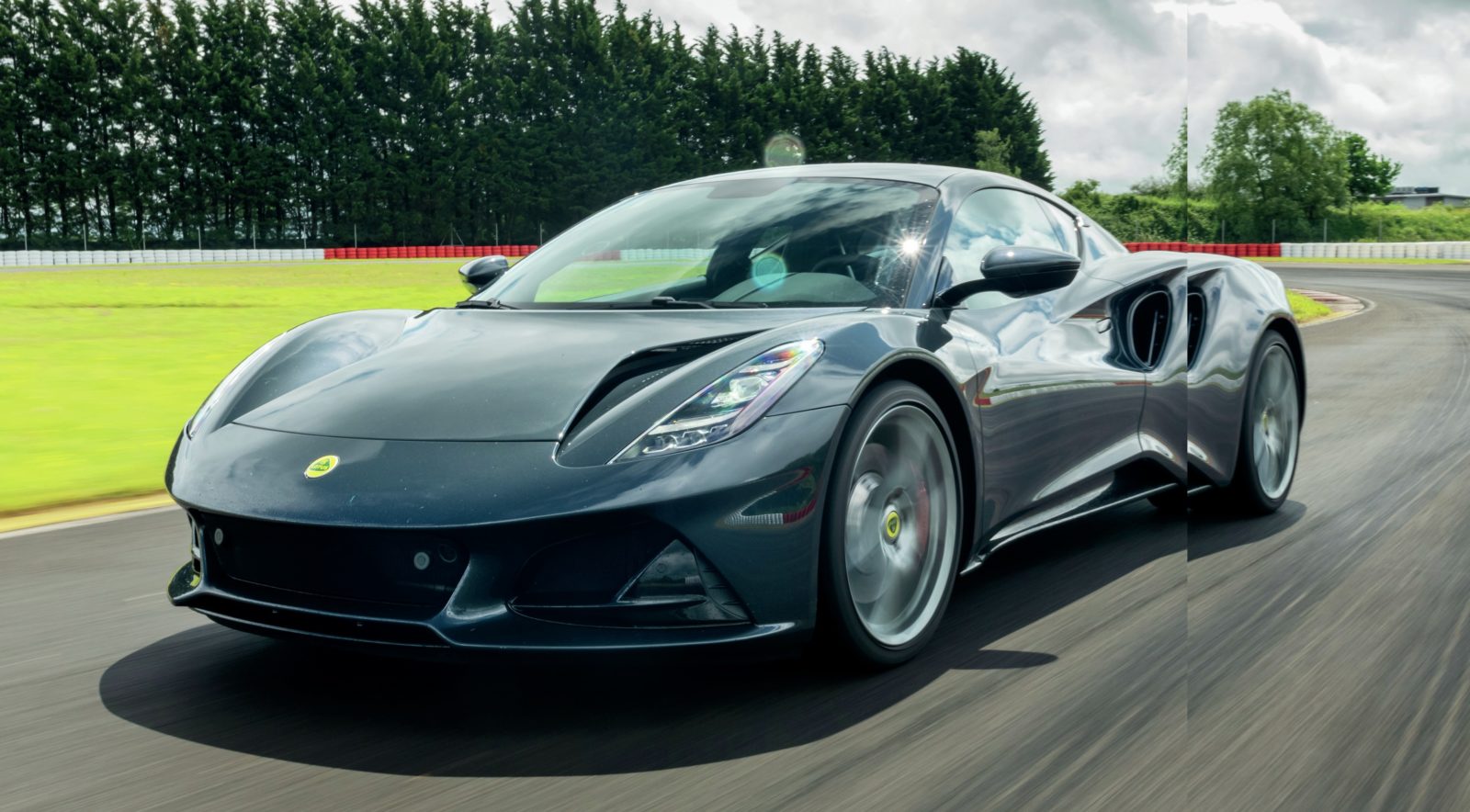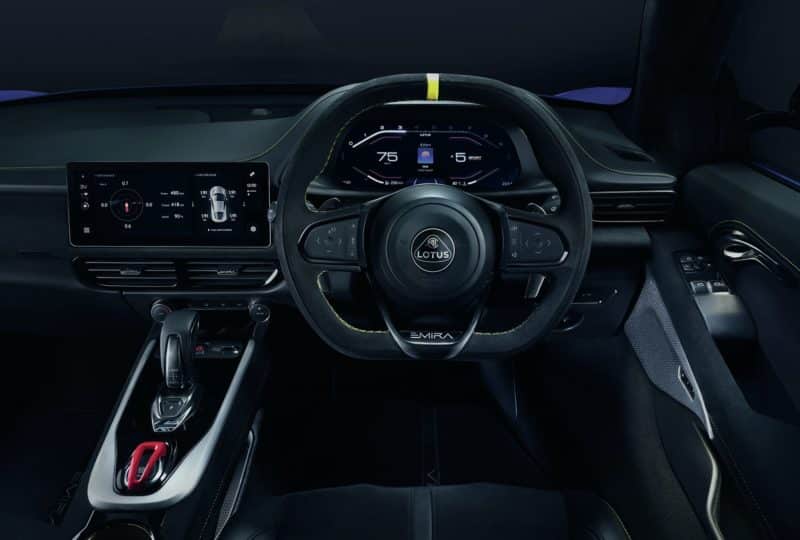2022 Lotus Emira review: The end of the line
The Emira is more than just a rebodied Evora, it is in fact the last of the traditional breed for Lotus. Andrew Frankel tried it

There’s more than a slight whiff of Ferrari styling cues in the Emira, not that it’s a bad thing...
The Lotus Emira has a difficult job ahead of it. Fated to be the last Lotus powered by an internal combustion engine, it must live up to those expectations and sign off that volume of history in appropriate fashion before the book is slammed shut for good.
But so too must it also be the bridge to Lotus’ future, until an all-new generation of pure electric Lotus sports cars can be brought on line some years from now.
Is it the brand new car it is claimed to be? Not quite. It is derived from the Evora, and shares its wheelbase and, in this case, its supercharged 3.5-litre V6 engine and six-speed manual gearbox. An eight-speed auto is available too. It has 400bhp, the alternative being a 360bhp, 2-litre four cylinder unit sourced from Mercedes-AMG, which comes only with a double clutch transmission. Deliveries of these fully equipped ‘First Edition’ cars starts this summer, with more affordable versions of both four- and six-cylinder Emira coming on stream thereafter. Prices start at £59,995 for the four cylinder car and end at £75,995 for the First Edition V6 tested here. The waiting list is already two years long, so those wanting a V6 should probably hurry: there’s new emissions legislation due, perhaps as early as 2025, which it won’t be capable of passing.
It would be more accurate to describe the car as essentially, rather than entirely, new. Inside and out its design bears no relation whatsoever to that of the Evora, wheelbase aside it shares no other dimensions while its suspension, steering, braking and electronic architecture are all completely new. It is much, much more than a facelifted or even rebodied Evora.
The only disappointment on the specification sheet, and then only relative to what we have come to expect from Lotus over the years, is its weight. I’d have imagined a core USP of any Lotus would be to ensure it was the lightest car in its class and by distance, but it’s not. Depending on model, it seems the Emira is around 50kg heavier than the equivalent Porsche Cayman, the car to which it is most likely to be compared. An Alpine A110 is over 300kg lighter, which is a lot. There are two specifications between which to choose called Touring and Sport, each coming with their own suspension settings, the former with Goodyear’s Eagle F1 Supersport tyres fitted, the latter the familiar Michelin Pilot Sport Cup 2, both specifically developed to suit the characteristics of the Emira. I drove a Touring, but with the optional mechanically locking differential. It is important to note too that it was an early prototype representative of customer cars dynamically, but below production standard in certain cosmetic areas.

The interior is fine and functional, but it won’t rival marques like Porsche in terms of quality
I never dwell on appearances for long, but for what it’s worth I think the Emira looks attractive and expensive far beyond its price point. It could be a junior supercar instead of a mainstream sports car. The interior is less glamorous, more minimalist and functional, with screens where once there were dials, buttons and switches. I’ll wait to see it in finished form, but for now I’d estimate it’s good enough, but unlikely to induce insomnia in Stuttgart.
“The Emira looks expensive well beyond its price point”
The Toyota V6 is as eager and effective as ever, providing torque in places no Cayman GTS flat six could manage. It’s not as smooth or tuneful, but it has a likeable character and is well matched to the ratios inside the otherwise unremarkable six-speed gearbox. But as ever with a Lotus, this powertrain is there merely to provide the platform upon which the chassis is then allowed to do its stuff.
Which in many ways is as remarkable as ever. The Touring suspension is perfectly suited to fast road use, imbuing the Emira with a lithe, supple gait that allows the body to move enough to feel natural and alive, but never so much as to become unruly.
Softly sprung but superbly damped, it manages the mass admirably well, while the still mercifully hydraulic steering provides a level of feel no all-electric setup can match – not even Porsche’s.
It’s good on the track too, bizarrely so over the kerbs, until you start driving it without the care and finesse that has always brought the best out of almost every Lotus.
This is not a car that responds positively to the ‘chuck in it and sort it out’ approach.
You’ll suddenly find yourself with a surprisingly un-Lotus amount of understeer which can transition rapidly to armfuls of oversteer if you try to power your way out of trouble. Take more care and it can be balanced and drifted, but it never feels a natural state. And I suspect Touring suspension and a limited-slip diff is the wrong combination for this car, and I’d very much like to try one without the other.
Overall, I admired the Emira and its every success will be deserved. It’s not a ground-breaking car, nor will it come to be remembered alongside the original Elan and Elise as an all-time great Lotus. But it is attractive, effective and more than good enough to do the job Lotus requires, which is to sign off the internal combustion era and keep interest fizzing until a new generation of all-electric sports cars.
2022 Lotus Emira V6 First Edition specifications
● Price £75,995
● Engine 3.5-litres, 6 cylinders, petrol, supercharged
● Power 400bhp at 6800rpm
● Torque 310lb ft at 3500rpm
● Weight 1458kg (DIN)
● Power to weight 274bhp per tonne
● Transmission Six-speed manual, rear-wheel drive
● 0-62mph 4.3sec
● Top speed 180mph
● Economy n/a
● CO2 243g/km
● Verdict A fine end to an era for Lotus
